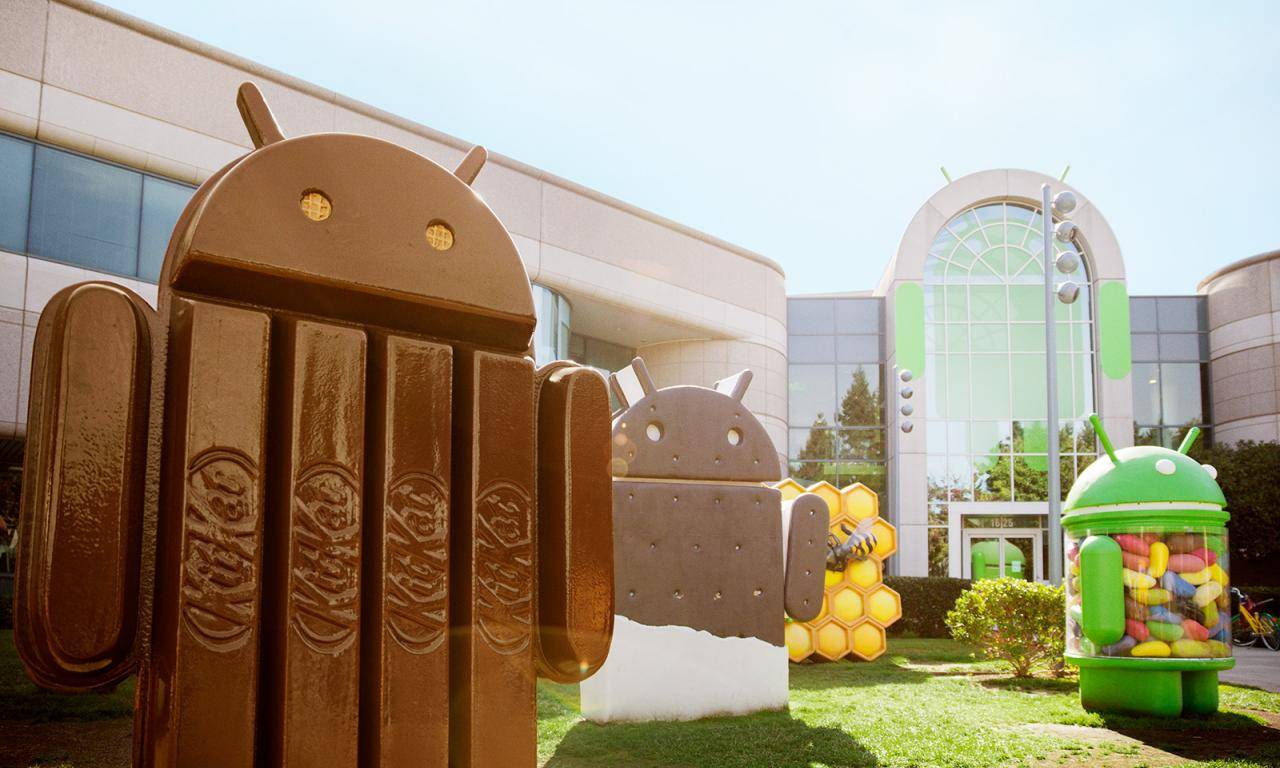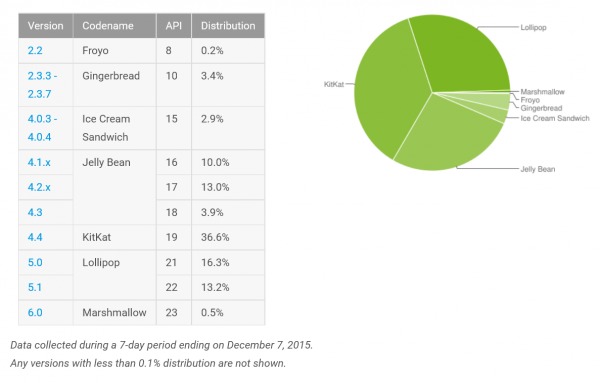
At the beginning of every month, Google gives us a glimpse of the status of Android versions distributed across the market. For developers, it’s a useful metric of which versions, as well as which device and display sizes, are dominating the market. For users and industry observers, it gives some insight into the trends and, sadly, the fragmentation of the Android platform. For the month of December, we’re glad to see Android 6.0 Marshmallow step up a bit from, 0.3 to 0.5 percent, in just a month’s time. But we’re also perplexed that one of the oldest versions of Android, 2.2 Froyo, still manages to stick around month after month.
Google’s policy is to only remove an Android version from its chart when it goes below 0.1 percent. That has so far happened only once since last year, when 3.2 Honeycomb finally bade us farewell in June. Froyo’s decline, however, has been slow, usually staying with the same percentage for months at a time. It is its fourth month to remain at 0.2 percent.

Not that new Froyo devices are being produced every time. But it does imply two things. That the more recent Android versions are not strong enough to completely push out the old generation, like Froyo and most especially 2.3 Gingerbread. The other is that there are still a sizeable number of devices out there who haven’t, or even can’t, upgrade to more recent versions. By implication, these devices are also running on less secure versions of Android.
In all those cases, Android fragmentation rears its ugly head once more. It is a curse that Android just can’t seem to be rid off, and there’s no assurance it’s going to be resolved in a year’s time. It is one of Google’s greatest challenges, too, and hopefully one it can overcome before Android 7 or 8 goes out the door.
SOURCE: Google









